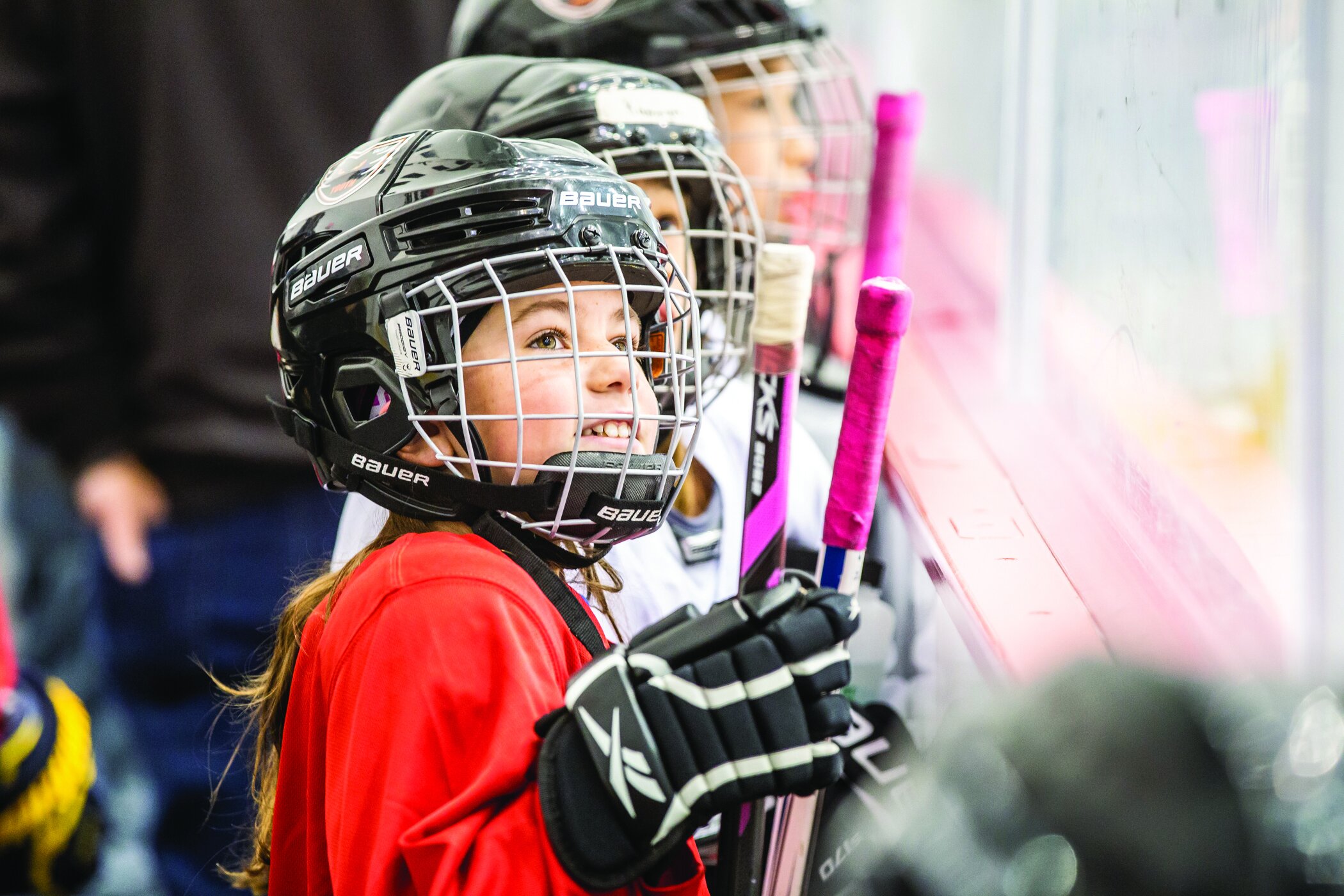Character Player
You don’t need a letter on your jersey or even elite skill to be a valuable team asset with your attitude
By Jessi Pierce
Before Minnesota Wild goaltender Alex Stalock steps on to the ice ahead of every game, he gets a text from his mom and dad.
Have fun.
It’s two words, but words the 33-year-old has gotten used to hearing from his parents in every sport he chose to pursue.
Winning streaks, losing streaks, goals allowed or shutouts—for Stalock, hockey is and always has been about having fun.
“I always thought it was important to have that light side of the room,” explained Stalock, who worked himself into a position as Minnesota’s starting goalie toward the second-half of the 2019-20 NHL season. “Obviously you want to have success and be a good team, but finding the time where you can mix in a laugh or keep it light—whether you’re going through a good time as a team or a bad time—I think that’s something that’s so important to have.
“It doesn’t matter how old you are, it’s all about having fun.”
Every player brings a valuable asset to a squad. Maybe you’re a notch above the rest in speed. Perhaps you’ve managed to perfect your forecheck or backcheck. Or maybe you’ve got a knack for scoring or passing. While skillsets are important to have, the off-ice character, leadership and, yes, overall positive attitude is an asset that cannot be overlooked
A character player
We often stress about the importance of building a player’s character on the ice as well as off. After all, that’s what playing hockey is all about—helping you hone lifelong skills as well as hockey-specific skills.
Former Blaine Bengal turned St. Cloud State Husky turned 11-year career NHLer Matt Hendricks embodied all that it meant to be a character player.
“He has no problem reaching out to the entire spectrum of our locker room, whether it’s a 22-minute guy or a six-minute guy, and helping shape that person’s day about being positive and being excited,” Winnipeg Jets coach Paul Maurice said back in 2019 after the Jets reacquired Hendricks from Minnesota for his final season.
“That’s just leadership. Are you a person the organization wants other players to follow? Do you have the ability and the skillset that can identify a guy that needs help and reach out, and have the respect of that player? He has all those things here.”
Hendricks lets out a sly smile when you make him aware of what a presence he has in a room with everyone.
“I mean, I’ve just always been a guy who gets along with just about everybody,” said Hendricks, now assistant director of player development for the Wild. “I learned how important using that was from Adam Foote when I was in Colorado. He would talk to me about being that guy, so I just started to focus on that and worked just as hard at being that guy in the room as being a strong player on the ice.
“The reason that’s important is, it’s important to bridge any gaps to become a true team. You have to have a certain individual in the room that can be parts of all groups. You need someone that can combine everybody and make it all work and make sure that everyone’s voices are heard.
“I think it’s critical to be that character guy, and it’s a role I truly valued.”
There’s a reason NHL scouts and development scouts care about the person behind the player.
“You see a lot of kids when they’re younger and they have that unbelievable skill and ability, but a lot of times, that only can get those kids so far,” said Stalock. “You come to a point in your career where it really is about the team. Coaches, scouts, general managers, when they’re making those final decisions, I think a lot of times at the end of the day, they will look for a guy that’s maybe not as skilled on the ice but say he’s an unbelievable team guy. Guys like playing with him. He may bring a little more to the team aspect. That’s also what teams are looking for.”
A team-first player
Anytime Hendricks saw a player down on himself following a rough shift or big loss, he was the first one to pick them up.
“Everyone’s going to have bad games. It’s a fact of life,” said Hendricks, who didn’t solidify himself as an NHLer until the age of 27 after six seasons in the minors. “But if you have a guy who’s willing to help others make sure they can pick themselves up, that’s valuable.”
Stalock said every level he’s ever played there was that player.
“You always had that one guy who kept it light, and made you want to get to the rink,” said Stalock, who admits he’s welcomed that role, especially while he was in a backup goaltending position. “You might be on a losing streak and you start to dread getting to the rink, but then you think of that one guy and wonder, ‘oh boy, what’s he going to do today to make us smile?’”
An ‘I love this game’ player
“I’m actually playing my best hockey when I’m simply having fun,” said Stalock. “You ask a lot of NHL guys, and they’ll tell you the same thing.”
Sure, winning is fun. Losing, slightly less fun. But if you can be the teammate that makes hockey enjoyable for all players and coaches, that speaks volumes.
“The pressures as you climb those levels (of hockey) gets steeper and steeper,” said Stalock, “but really at the end of the day, it’s about are you enjoying it? When you go to the rink, are you truly having fun? The day you start going to the rink and it’s not fun, that’s when it’s time to probably get away.”

